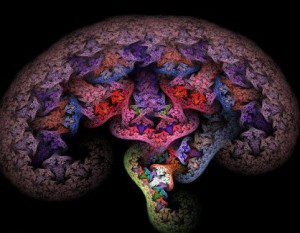Recency Effect Definition
 The recency effect is an order of presentation effect that occurs when more recent information is better remembered and receives greater weight in forming a judgment than does earlier-presented information. Recency effects in social psychology have been most thoroughly studied in impression formation research. Typically, researchers investigate how impressions are formed on the basis of sequentially presented information. For example, a recency effect occurs if a person who is described in terms of three positive traits followed by three negative traits is subsequently evaluated more negatively than is a person described by exactly the same traits but presented in a reverse order (negative traits followed by positive traits).
The recency effect is an order of presentation effect that occurs when more recent information is better remembered and receives greater weight in forming a judgment than does earlier-presented information. Recency effects in social psychology have been most thoroughly studied in impression formation research. Typically, researchers investigate how impressions are formed on the basis of sequentially presented information. For example, a recency effect occurs if a person who is described in terms of three positive traits followed by three negative traits is subsequently evaluated more negatively than is a person described by exactly the same traits but presented in a reverse order (negative traits followed by positive traits).
The opposite of a recency effect is a primacy effect, when early information has a disproportionate influence on subsequent impressions compared to more recent information. Both recency and primacy effects have important consequences in many everyday impression formation judgments. One might wonder, for example, whether the most effective strategy in a job interview is to present your best points first (expecting a primacy effect), or present your best points last (expecting a recency effect)? To answer such questions, we need to understand the mechanisms that produce recency effects.
Academic Writing, Editing, Proofreading, And Problem Solving Services
Get 10% OFF with 24START discount code
Recency Effect Mechanism
The most plausible explanation of recency effects emphasizes memory processes: More recent information is simply better remembered and so more available to be used when forming a judgment. Numerous studies have found that immediate past events are usually better remembered than are more distant past events. There are, however, a number of specific conditions that influence the likelihood of recency effects.
Recency Effect Facilitating Conditions
Two kinds of factors seem to influence the presence and strength of recency effects in impression formation: (1) how the task is structured and presented (task factors) and (2) how judges process the available information (processing factors). Task factors include the length and distribution of the information array over time. When the information array is long, or there is a long delay or other activity interposed between early and late items of information, or judgments are formed immediately after the presentation of the last information, recency effects are more likely, simply because judges will disproportionately rely on recent and better remembered details. In contrast, when the information sequence is short and is presented without interruption, primacy effects are the more likely result.
The way judges process the available information is also important in explaining recency effects. When judges are instructed to use step-by-step processing and update their impressions after each piece of information is received, primacy effects are reduced and recency effects become more likely. Recency effects are also more likely when judges do not know that they need to form an impression until after all the information is received. In the absence of an a priori impression formation goal, judges must rely on their memories for input into the impression formation judgment. Under such circumstances recent, better remembered information receives more weight and a recency effect results. In contrast, when judges know from the beginning that impression formation is the goal, a primacy effect is more likely.
Reference:
- Jones, E. E., & Goethals, G. R. (1972). Order effects in impression formation: Attribution context and the nature of the entity. In E. E. Jones, D. E. Kanouse, H. H. Kelly, R. E. Nisbett, S. Valins, & B. Weiner (Eds.), Attribution: Perceiving the causes of behavior (pp. 27—46). Morristown, NJ: General Learning Press.